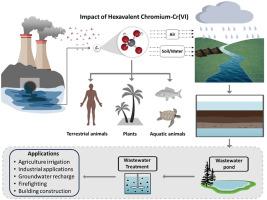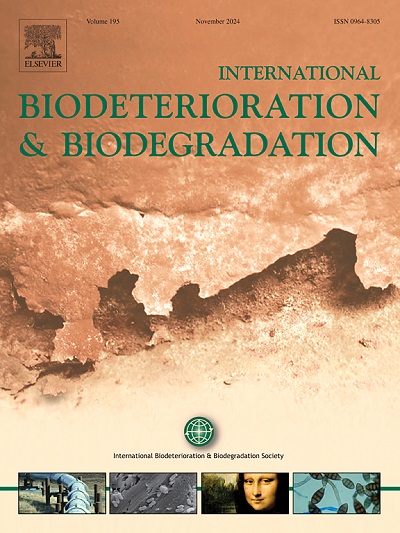Bioremediation approaches for chromium detoxification and transformation: Advanced strategies and future Perspectives
IF 4.1
2区 环境科学与生态学
Q2 BIOTECHNOLOGY & APPLIED MICROBIOLOGY
International Biodeterioration & Biodegradation
Pub Date : 2024-11-09
DOI:10.1016/j.ibiod.2024.105951
引用次数: 0
Abstract
Hexavalent chromium [Cr(VI)] contamination poses a significant environmental and public health risk due to its widespread industrial use, toxic nature, and carcinogenic properties. Conventional Cr(VI) remediation methods, including electrochemical processes, ion exchange, reverse osmosis, and adsorption, face challenges such as high energy consumption and incomplete detoxification. This review provides a comprehensive evaluation of cutting-edge bioremediation techniques for Cr(VI) removal, with an emphasis on microbial mechanisms involving bacteria and fungi. Bioremediation approaches, particularly those utilizing Cr(VI)-resistant microorganisms, present promising, eco-friendly, and cost-effective solutions for chromium pollution mitigation. The mechanisms of biosorption, bioaccumulation, and bio-reduction employed by these microorganisms are thoroughly examined. Furthermore, the review addresses the scalability and practical application of these biotechnologies in wastewater treatment facilities. This analysis highlights the critical need for innovative, sustainable chromium bioremediation strategies and outlines future research directions to advance this vital field.

铬解毒和转化的生物修复方法:先进战略与未来展望
六价铬[Cr(VI)]污染因其广泛的工业用途、毒性和致癌特性,对环境和公共健康构成了重大风险。包括电化学过程、离子交换、反渗透和吸附在内的传统六价铬修复方法面临着高能耗和解毒不彻底等挑战。本综述全面评估了去除六价铬的尖端生物修复技术,重点是涉及细菌和真菌的微生物机制。生物修复方法,特别是那些利用抗六价铬微生物的方法,为减轻铬污染提供了前景广阔、生态友好和经济高效的解决方案。综述深入研究了这些微生物的生物吸附、生物累积和生物还原机制。此外,研究还探讨了这些生物技术在废水处理设施中的可扩展性和实际应用。这项分析强调了对创新型、可持续铬生物修复战略的迫切需要,并概述了推进这一重要领域的未来研究方向。
本文章由计算机程序翻译,如有差异,请以英文原文为准。
求助全文
约1分钟内获得全文
求助全文
来源期刊
CiteScore
9.60
自引率
10.40%
发文量
107
审稿时长
21 days
期刊介绍:
International Biodeterioration and Biodegradation publishes original research papers and reviews on the biological causes of deterioration or degradation.

 求助内容:
求助内容: 应助结果提醒方式:
应助结果提醒方式:


